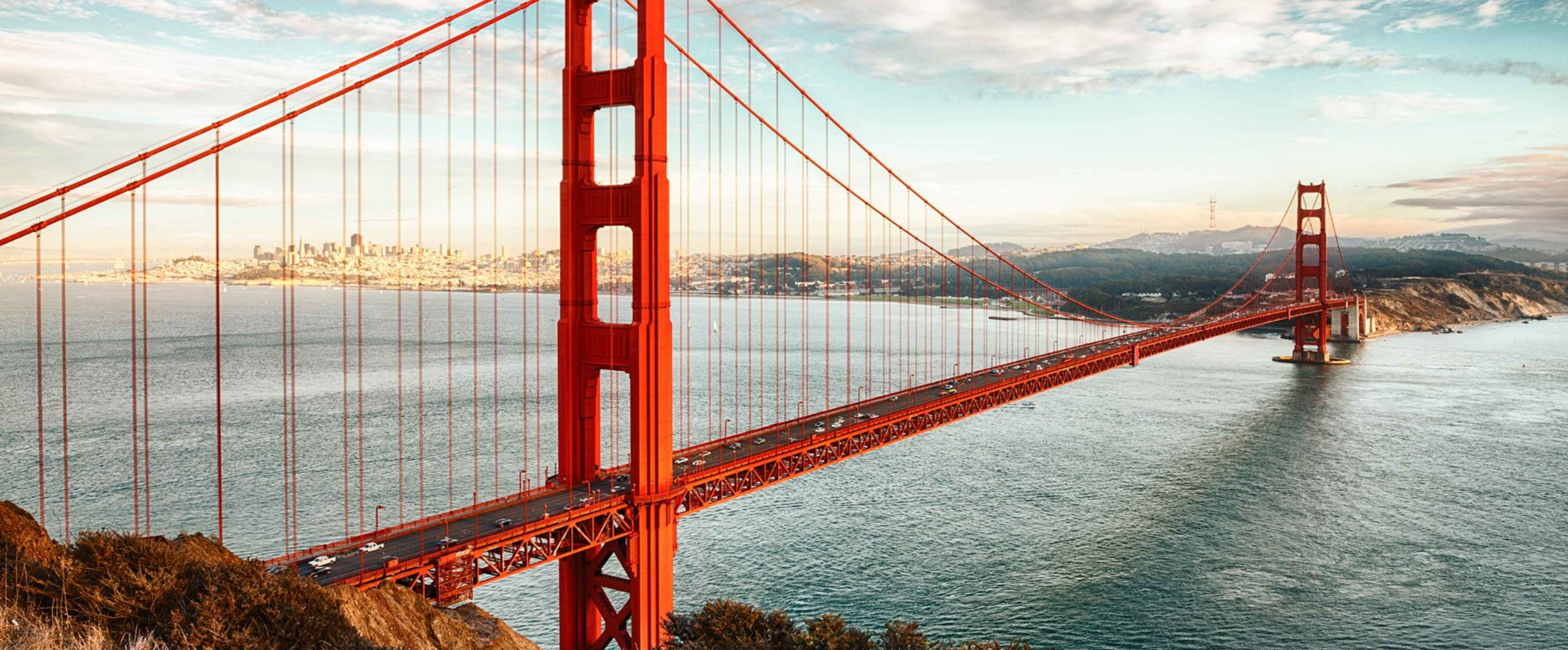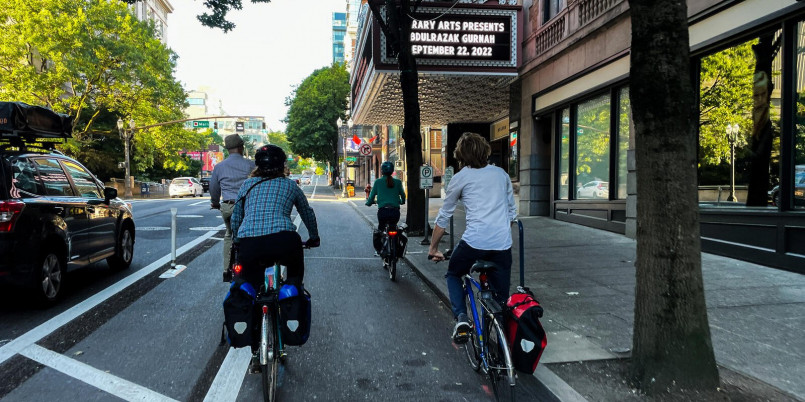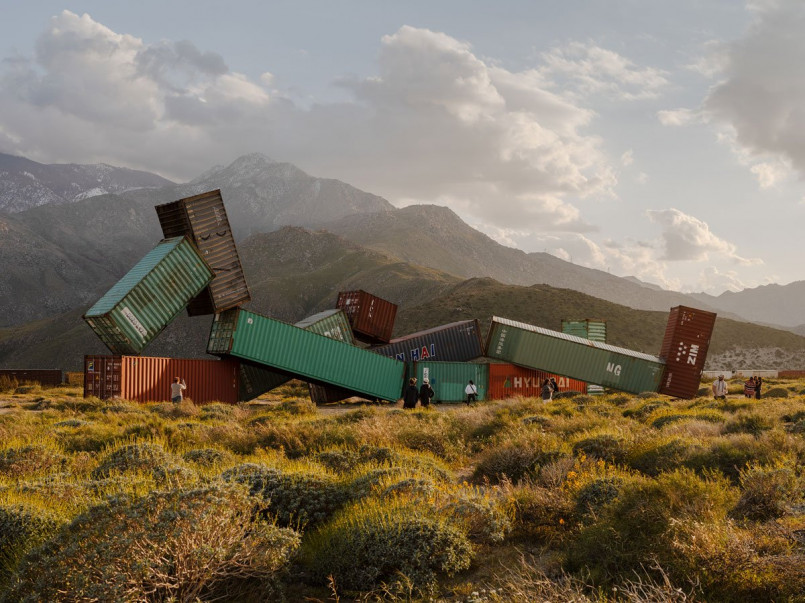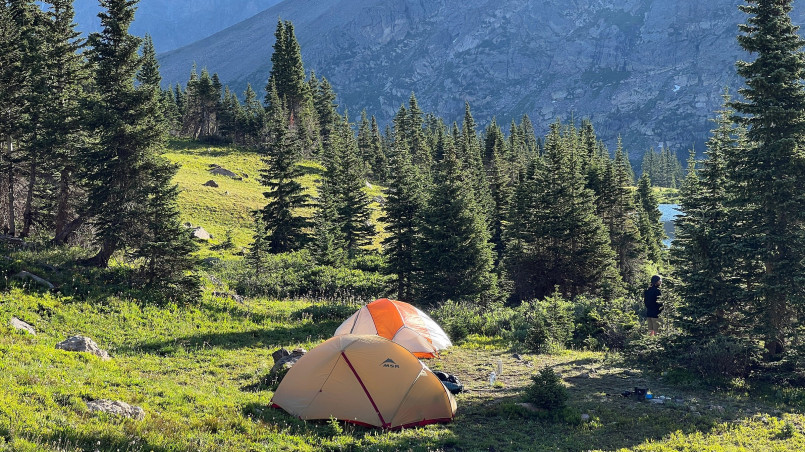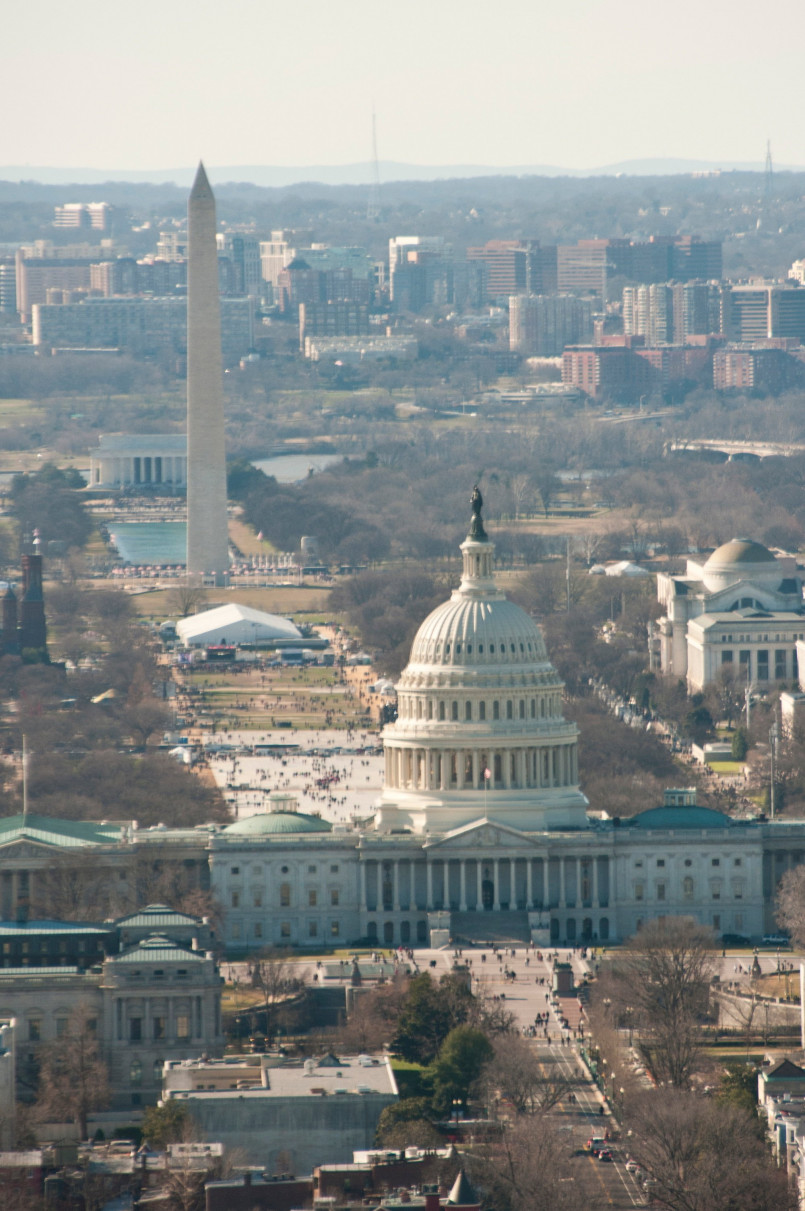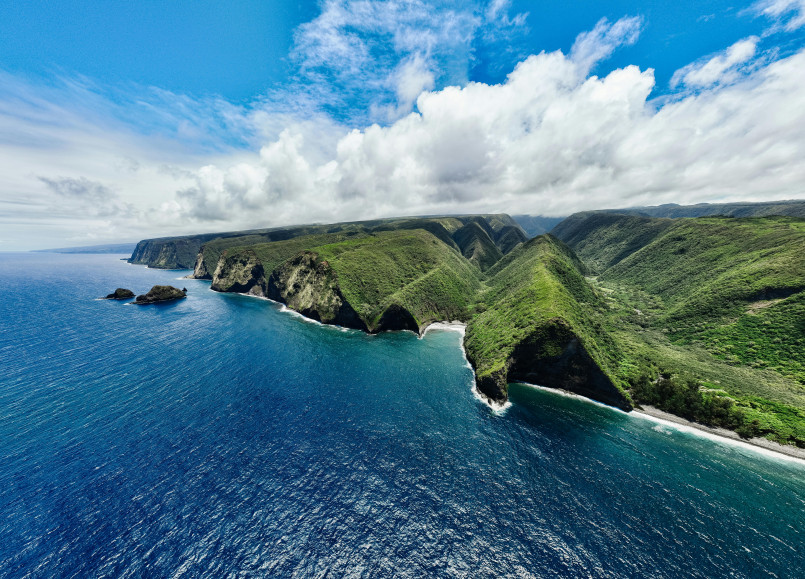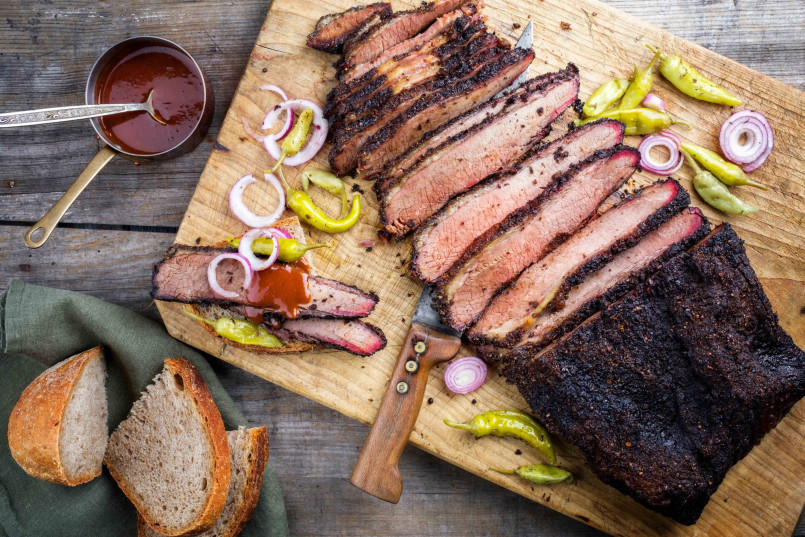From coast to coast, America's bridges tell stories of engineering triumph, historical significance, and architectural beauty. These iconic structures not only connect landscapes but have become beloved landmarks that define their cities.
America's landscape is dotted with bridges that range from engineering marvels to architectural masterpieces. These structures don't just connect physical locations-they connect us to history, inspire awe with their design, and often become the defining symbols of their cities. From suspension spans that stretch impossibly far to historic crossings that changed transportation forever, these famous American bridges represent some of the most impressive infrastructure achievements in the country.
Whether you're planning a road trip across America or simply appreciate remarkable engineering, these iconic bridges deserve a spot on your must-see list. Each one tells a unique story about American innovation, persistence, and the human desire to connect communities across challenging terrain.
Golden Gate Bridge
Perhaps no bridge in America is more recognizable than San Francisco's Golden Gate Bridge. Completed in 1937, this art deco masterpiece spans 1.7 miles across the Golden Gate Strait, connecting San Francisco to Marin County. Its distinctive International Orange color was originally meant to be temporary, chosen to make the bridge visible through San Francisco's famous fog, but the color proved so popular it became permanent.
The Golden Gate Bridge took four years to build and was the longest suspension bridge in the world when completed. Today, it carries approximately 112,000 vehicles daily and remains one of the most photographed structures in the world. Visitors can walk or bike across the bridge for spectacular views of the bay, Alcatraz Island, and the San Francisco skyline.
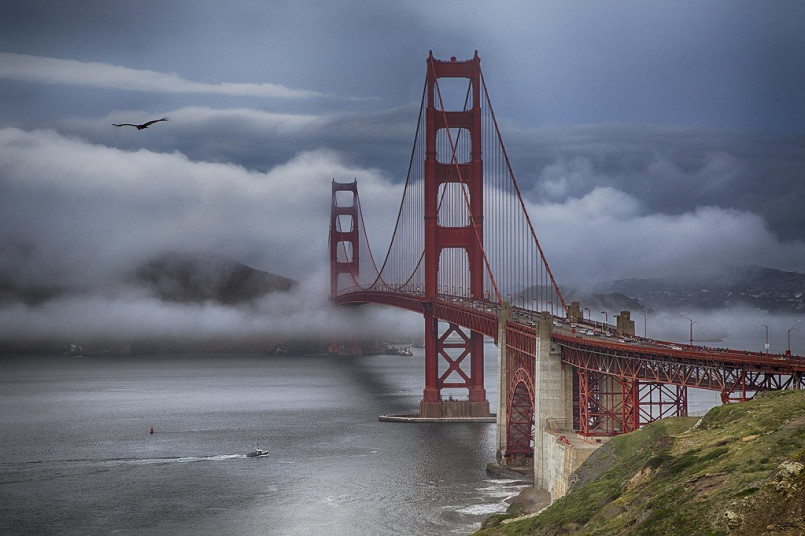
Brooklyn Bridge
When the Brooklyn Bridge opened in 1883, it was the longest suspension bridge in the world and the first steel-wire suspension bridge ever constructed. Connecting Manhattan and Brooklyn across the East River, this National Historic Landmark represents a pivotal moment in American engineering history.
The bridge's Gothic arches and intricate cable patterns make it not just functional but beautiful. Its designer, John Augustus Roebling, died from tetanus before construction began, and his son Washington Roebling took over as chief engineer. When Washington became too ill to visit the site, his wife Emily Warren Roebling stepped in to relay instructions to workers and essentially managed the project to completion.
Today, the pedestrian walkway offers one of the most spectacular views of the Manhattan skyline and remains a beloved symbol of New York City.
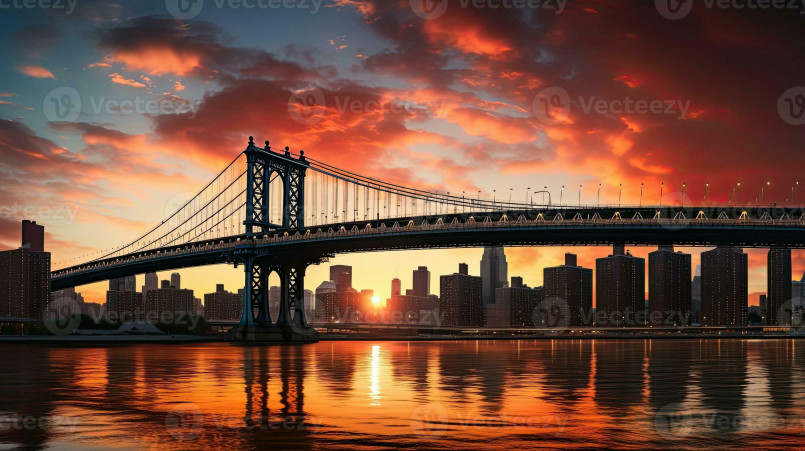
Bixby Creek Bridge
Perched along California's stunning Big Sur coastline, the Bixby Creek Bridge is one of the most photographed bridges in California, perhaps second only to the Golden Gate. This concrete open-spandrel arch bridge completed in 1932 spans 714 feet across Bixby Creek and stands 260 feet above the canyon below.
The dramatic setting-with the Pacific Ocean as backdrop and the rugged coastline surrounding it-makes it a favorite stop for travelers along Highway 1. The bridge represented an engineering feat for its time, helping to connect previously isolated communities along the central California coast.
For the best views and photographs, visitors typically stop at the scenic viewpoints on the northern side of the bridge.
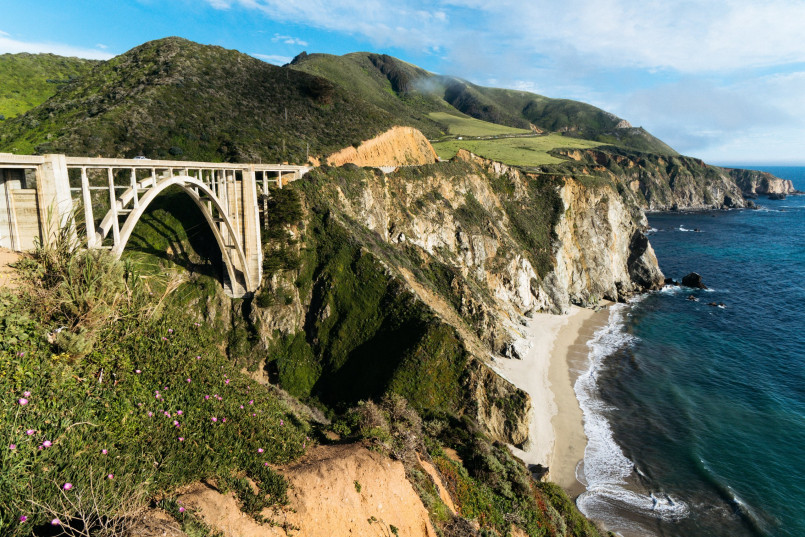
Mackinac Bridge
Connecting Michigan's Upper and Lower Peninsulas across the Straits of Mackinac, the "Mighty Mac" stretches 5 miles from shore to shore, making it one of the longest suspension bridges in the Western Hemisphere. Opened in 1957 after more than three years of construction, the bridge solved the problem of connecting the state's two landmasses, which previously required ferry transport.
The Mackinac Bridge experiences such powerful winds that the bridge authority offers escort services for drivers who feel uncomfortable crossing during windy conditions. Local tradition includes the annual Mackinac Bridge Walk every Labor Day, when thousands of pedestrians cross the span on foot-the only day of the year when walking is permitted.
The bridge offers stunning views of Lake Huron and Lake Michigan, which meet at the straits below.
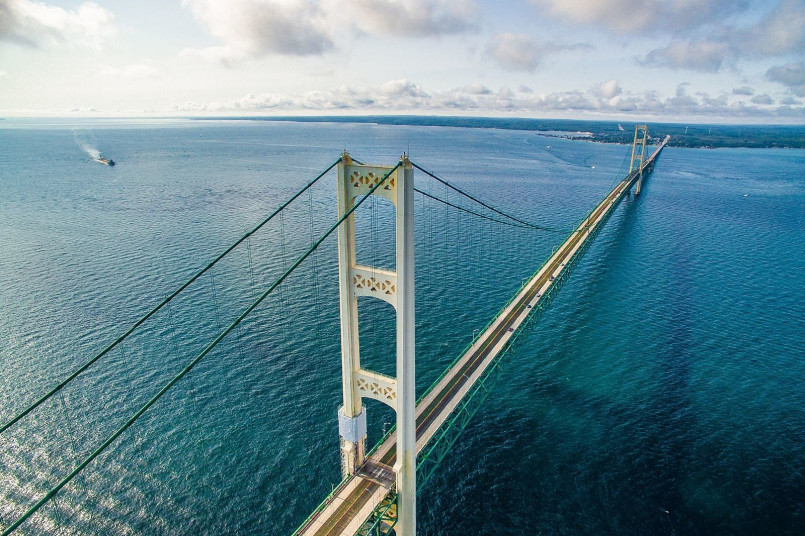
Coronado Bridge
The San Diego-Coronado Bridge, known locally as the Coronado Bridge, curves dramatically across San Diego Bay, connecting downtown San Diego with Coronado Island. Opened in 1969, the bridge's distinctive 90-degree turn was designed to achieve the necessary height while accommodating naval ships passing underneath.
Rising 200 feet above the water, the 2.1-mile bridge features a gentle curve that gives drivers spectacular views of the San Diego skyline and harbor. The bridge's graceful blue color was chosen to match the sky and sea surrounding it.
In recent years, the bridge has become known for an artistic transformation: the concrete pillars supporting the bridge on the Barrio Logan side have been painted with colorful murals depicting the cultural heritage of the area, creating Chicano Park beneath the bridge.

Seven Mile Bridge
As part of the Overseas Highway that connects the Florida Keys to the mainland, the Seven Mile Bridge is an engineering marvel that literally takes drivers across the open ocean. The current bridge, completed in 1982, runs parallel to the original bridge built in the early 20th century as part of the Florida East Coast Railway's Key West Extension.
At 6.79 miles long, the bridge connects Knight's Key in the Middle Keys to Little Duck Key in the Lower Keys. Driving across this bridge offers unparalleled 360-degree views of the turquoise waters of the Gulf of Mexico and Atlantic Ocean. Portions of the old bridge remain standing and have been converted into a pedestrian and cycling path known as the Old Seven Mile Bridge or "Old 7."
The bridge has featured in numerous films, including "True Lies" and the "Fast and Furious" franchise, cementing its place in popular culture.
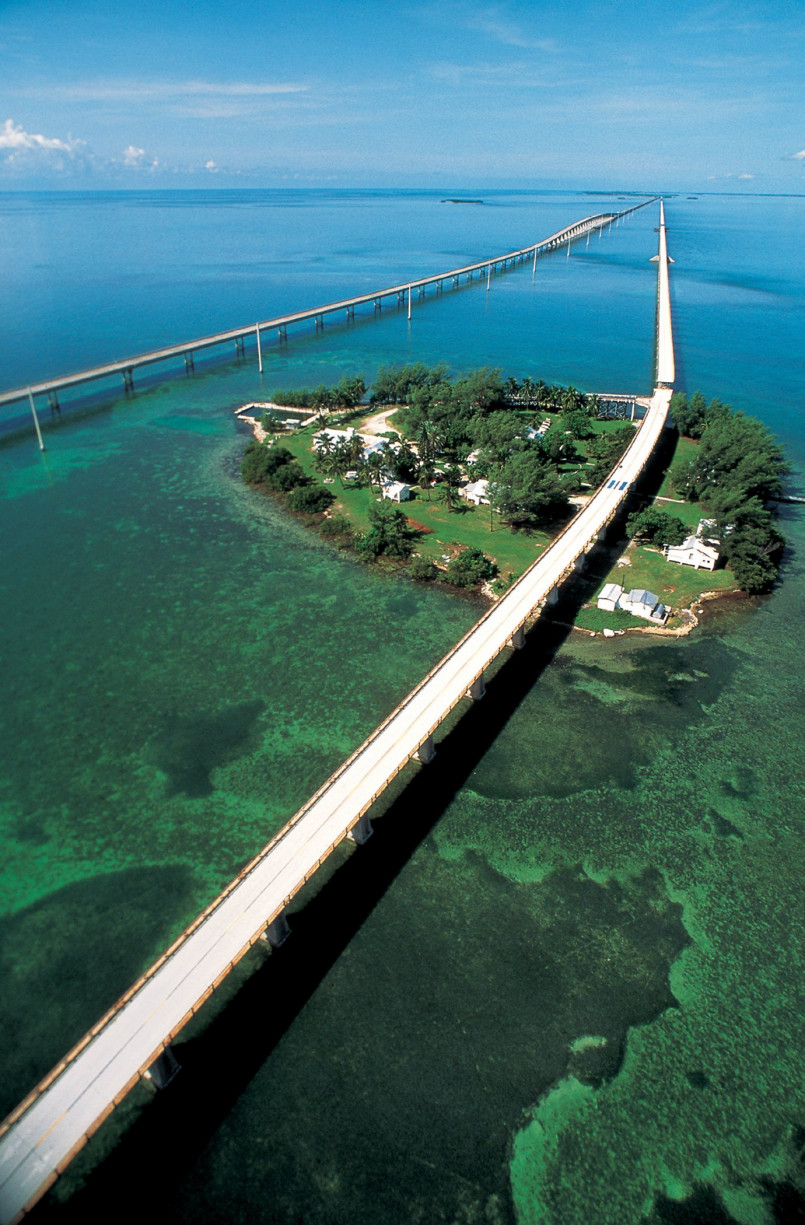
Sunshine Skyway Bridge
The Bob Graham Sunshine Skyway Bridge spans Tampa Bay, Florida, with a distinctive yellow cable-stayed design that has made it an instantly recognizable landmark. The current bridge, completed in 1987, replaced the original bridge that partially collapsed in 1980 after being struck by a freighter during a storm.
The bridge's design includes a harp-like arrangement of cables and bright yellow paint that's meant to symbolize sunshine. At its highest point, the bridge rises 430 feet above the water, providing clearance for large ships entering Tampa Bay while offering drivers breathtaking views of the surrounding waters.
The original bridge's remaining sections have been converted into fishing piers that extend from both shores, popular spots for anglers and those wanting to enjoy the bay views.
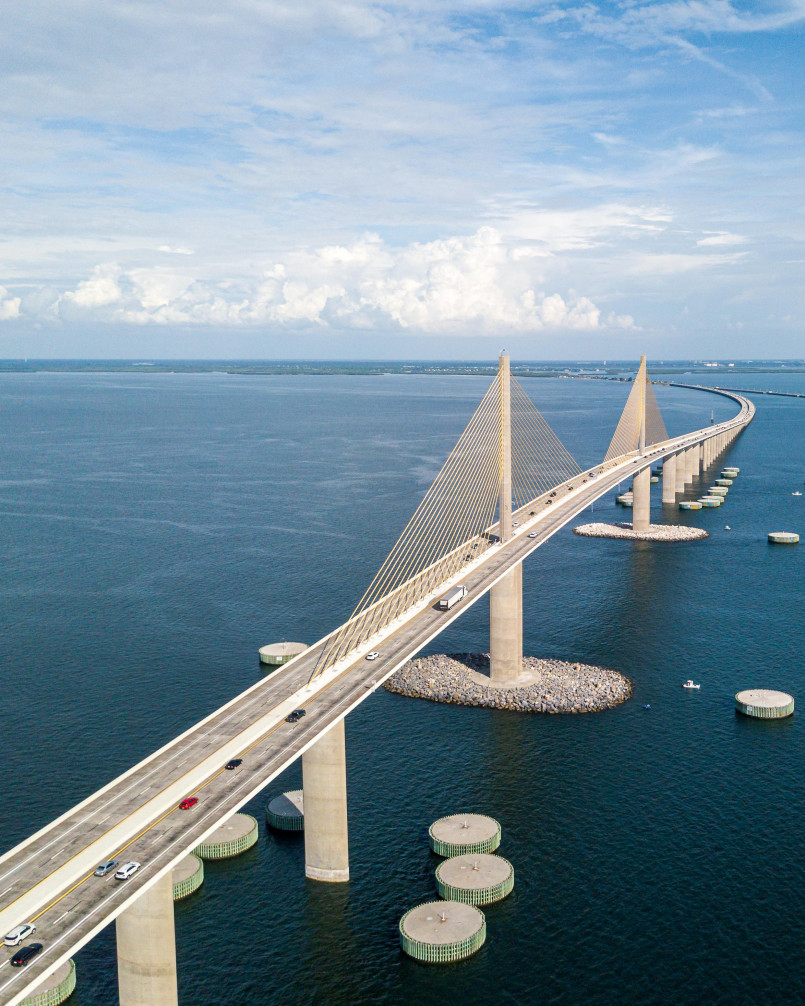
George Washington Bridge
Connecting Manhattan to Fort Lee, New Jersey across the Hudson River, the George Washington Bridge is one of the busiest bridges in the world, carrying over 103 million vehicles annually. Completed in 1931, this double-decked suspension bridge has a total length of 4,760 feet and was the longest main span in the world until the Golden Gate Bridge was completed.
The bridge's design is notable for its exposed steel towers-originally intended to be clad in stone before budget constraints during the Great Depression left them bare. This unintended design element has become one of the bridge's most distinctive features, with Le Corbusier calling it "the most beautiful bridge in the world."
At night, the bridge is illuminated with LED lights, creating a spectacular addition to the New York City skyline.
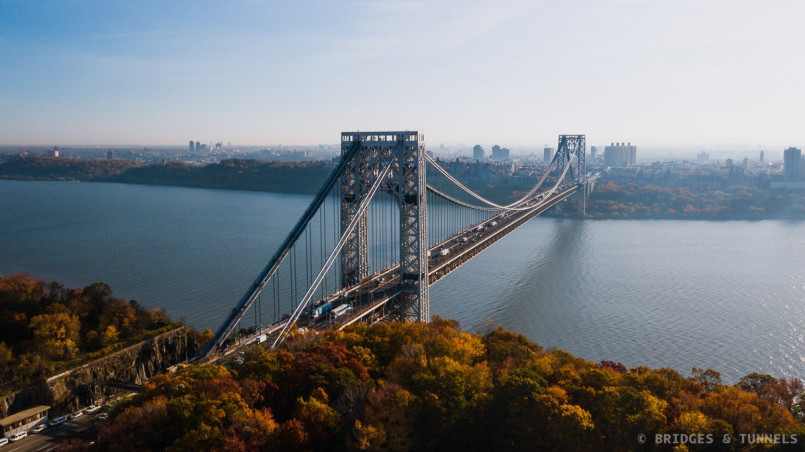
Chesapeake Bay Bridge
The Chesapeake Bay Bridge, officially the William Preston Lane Jr. Memorial Bridge, connects Maryland's eastern and western shores across the Chesapeake Bay. Opened in 1952 with a parallel span added in 1973, the dual-span bridge stretches 4.3 miles and reaches heights of 186 feet above the water.
The bridge is known for inspiring both awe and anxiety-its narrow lanes, steep inclines, and exposure to strong winds make it intimidating for some drivers. In fact, a service exists to drive nervous motorists across the span.
From the bridge, travelers can see for miles across the largest estuary in the United States, with spectacular views particularly at sunrise and sunset. The bridge has become a symbol of Maryland and a gateway to the popular vacation destinations of the Eastern Shore.
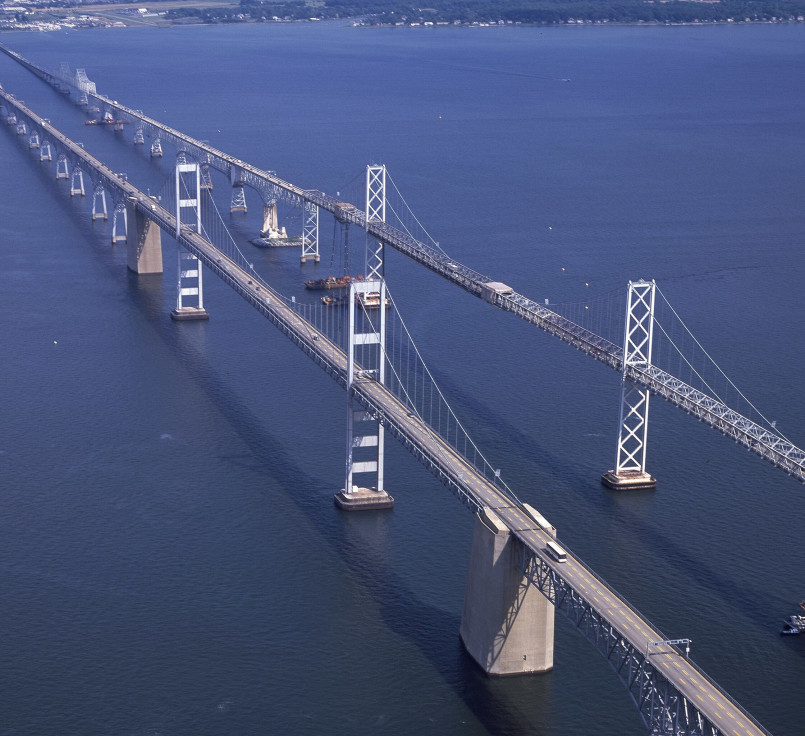
Royal Gorge Bridge
The Royal Gorge Bridge in Colorado holds the distinction of being one of the highest bridges in the United States, suspended 956 feet above the Arkansas River. Completed in 1929, this steel and wooden plank bridge spans 1,260 feet across the Royal Gorge.
Originally built as a tourist attraction rather than a transportation necessity, the bridge is now the centerpiece of Royal Gorge Bridge & Park. Visitors can walk across the bridge for breathtaking views of the gorge below or take the aerial gondola that crosses the canyon.
For thrill-seekers, the park also offers one of the world's highest zip lines and a skycoaster that swings riders out over the edge of the gorge. The bridge's setting among the dramatic red rock cliffs of the Colorado landscape makes it particularly photogenic.
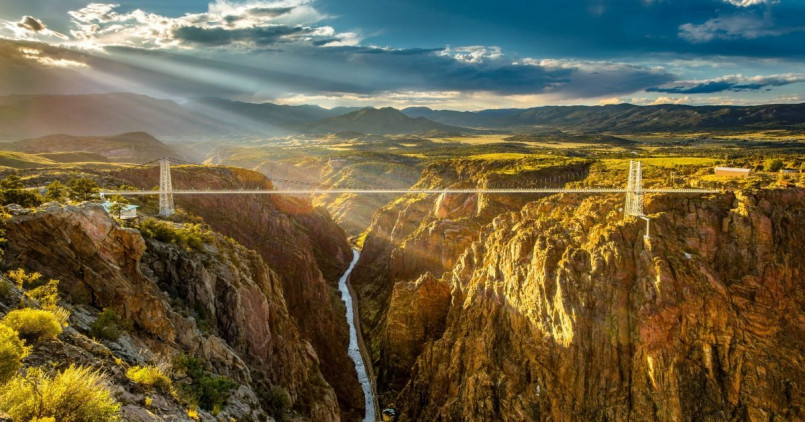
New River Gorge Bridge
The New River Gorge Bridge in West Virginia is so iconic it appears on the state's quarter. Completed in 1977, this steel arch bridge spans 3,030 feet across the New River Gorge and stands 876 feet above the river, making it one of the highest bridges in the Americas.
The bridge dramatically reduced travel time in the area from 45 minutes on winding mountain roads to less than a minute. Its graceful arch design complements the natural beauty of the surrounding Appalachian Mountains and gorge.
Every October, the bridge hosts "Bridge Day," West Virginia's largest single-day festival, when the span is closed to vehicles and opened to pedestrians. The event features hundreds of BASE jumpers parachuting from the bridge into the gorge below, along with rappelling demonstrations and other festivities.
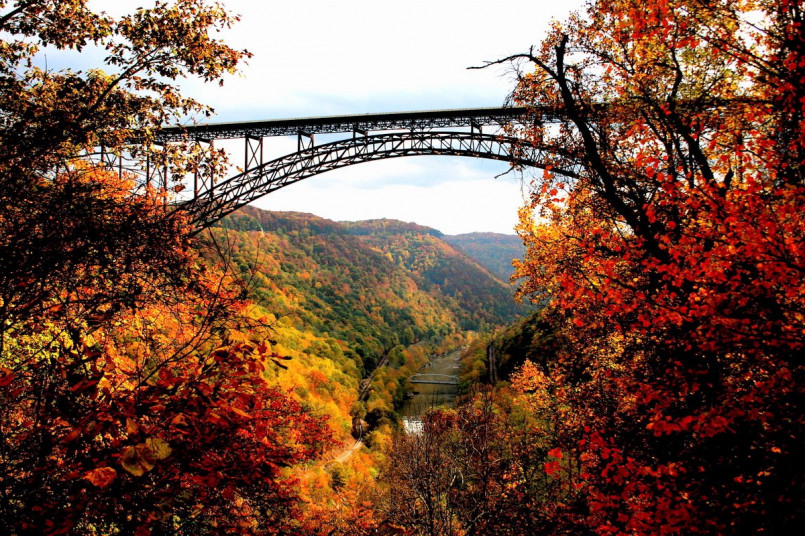
Manhattan Bridge
Often overshadowed by its more famous neighbor, the Brooklyn Bridge, the Manhattan Bridge is nevertheless an impressive structure with its own distinct character. Completed in 1909, this suspension bridge connects Lower Manhattan to Downtown Brooklyn across the East River.
The bridge is recognizable by its grand entrance plaza on the Manhattan side, featuring a triumphal arch and colonnade designed by architects Carrère and Hastings. The bridge carries both vehicular traffic and subway lines, making it vital to New York City's transportation infrastructure.
The Manhattan Bridge offers excellent views of the Brooklyn Bridge, the Manhattan skyline, and the East River. Its location in DUMBO (Down Under the Manhattan Bridge Overpass) has become one of Brooklyn's trendiest neighborhoods, with the bridge itself serving as a backdrop for countless photographs, films, and TV shows.
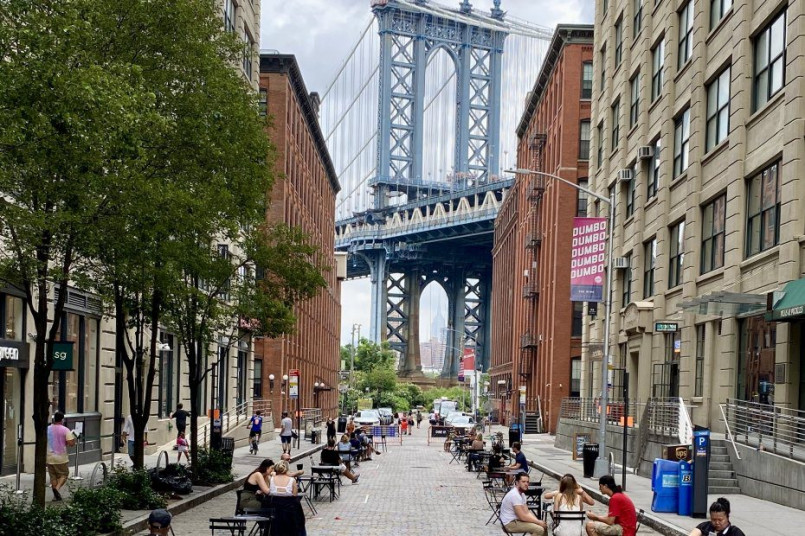
Bay Bridge
The San Francisco-Oakland Bay Bridge, locally known simply as the Bay Bridge, connects San Francisco to Oakland across San Francisco Bay. Opened in 1936, just months before the Golden Gate Bridge, this double-decker bridge actually consists of two sections connected by Yerba Buena Island in the middle of the bay.
The western span is a suspension bridge, while the eastern span was replaced in 2013 with a striking single-tower self-anchored suspension design after the original span was damaged in the 1989 Loma Prieta earthquake. The new eastern span features a 525-foot-tall tower and a sleek, curved design that has modernized the bridge's appearance.
At night, the bridge is illuminated by "The Bay Lights," an LED light sculpture created by artist Leo Villareal that displays moving patterns across the western span, turning the bridge into a dynamic work of art visible throughout the bay area.
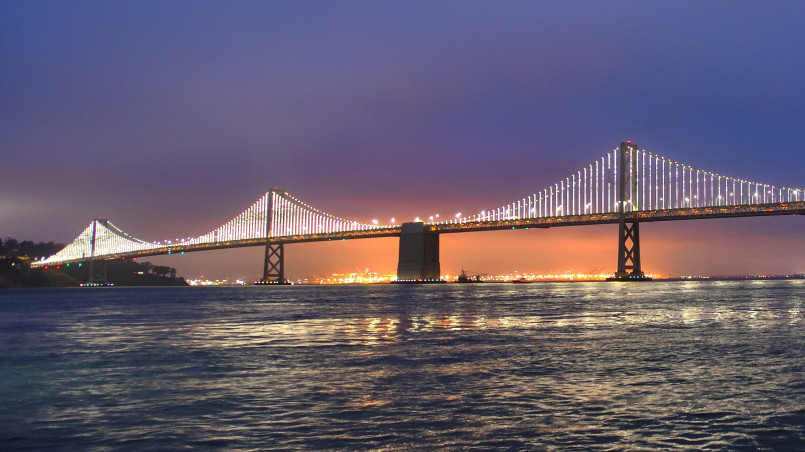
Newport Bridge
The Claiborne Pell Bridge, commonly known as the Newport Bridge, spans the East Passage of Narragansett Bay, connecting Newport and Jamestown, Rhode Island. Completed in 1969, this graceful suspension bridge has become an iconic symbol of Rhode Island and is featured on the state's "Wave" license plate.
With a main span of 1,600 feet and a total length of 11,247 feet, the bridge provides clearance of 215 feet above the water, allowing large vessels to pass beneath it. The bridge offers spectacular views of Newport Harbor, with its historic sailing vessels and mansions visible from the span.
The Newport Bridge is particularly beautiful at sunset, when its cables are silhouetted against the changing colors of the sky, and at night, when it's illuminated with lights that reflect on the water below.

Zavikon Bridge
While not as massive as other bridges on this list, the Zavikon Island Bridge in the Thousand Islands region along the US-Canada border claims fame as one of the shortest international bridges in the world. This small footbridge connects two private islands-one in American waters and one in Canadian waters.
The bridge spans only about 32 feet, connecting Zavikon Island (in Canada) to a smaller island that sits in US territory. While technically private property, this unique bridge is visible from boat tours of the Thousand Islands and has become a popular tourist attraction in the region.
The bridge represents the friendly relationship between the United States and Canada, literally bridging the international boundary in this scenic archipelago where the St. Lawrence River meets Lake Ontario.
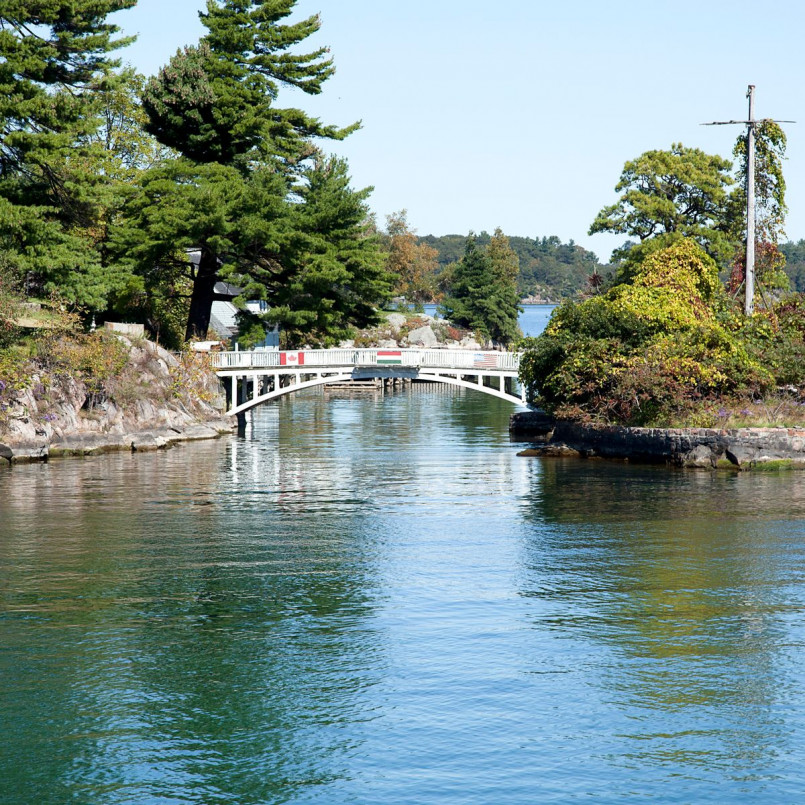
Frequently Asked Questions About 15 Most Iconic Bridges in America You Need to See
What is the oldest major bridge still in use in the United States?
The Stone Arch Bridge in Minneapolis, built in 1883, is often considered the oldest major bridge still in daily use. The Brooklyn Bridge, also completed in 1883, is the oldest major suspension bridge still in use. Several smaller stone bridges dating to the 18th century can be found in the Northeast.
When is the best time to visit the Golden Gate Bridge?
Early morning (before 10am) often provides the clearest views before fog rolls in, particularly in summer months. September and October typically offer the clearest weather. Weekday visits help avoid weekend crowds, and the southeast vista point tends to be less crowded than the northeast side.
Can you walk across all these famous bridges?
Not all bridges allow pedestrians. The Brooklyn Bridge, Golden Gate Bridge, and Manhattan Bridge have dedicated pedestrian walkways. The Mackinac Bridge only allows pedestrians once a year during the Labor Day Bridge Walk. The Royal Gorge Bridge is a pedestrian attraction. Many others like the Coronado Bridge and Chesapeake Bay Bridge don't permit pedestrian access for safety reasons.
Which bridge is considered the most challenging to drive across?
The Chesapeake Bay Bridge is often cited as one of the most anxiety-inducing drives due to its height, length, and exposure to crosswinds. It has a service where drivers can hire someone to drive their car across. The Mackinac Bridge in Michigan also offers driver assistance during high winds.
What's the longest bridge in the United States?
The Lake Pontchartrain Causeway in Louisiana is considered the longest continuous bridge over water in the US at nearly 24 miles long. However, the Manchac Swamp Bridge, also in Louisiana, is technically longer at 22.8 miles but crosses both land and water.
Are there any toll-free bridges among these famous bridges?
While many famous bridges charge tolls, some notable exceptions include the Bixby Creek Bridge, New River Gorge Bridge, and Royal Gorge Bridge (though the latter charges an entrance fee to the park). Most major bridges in urban areas collect tolls to fund maintenance.
